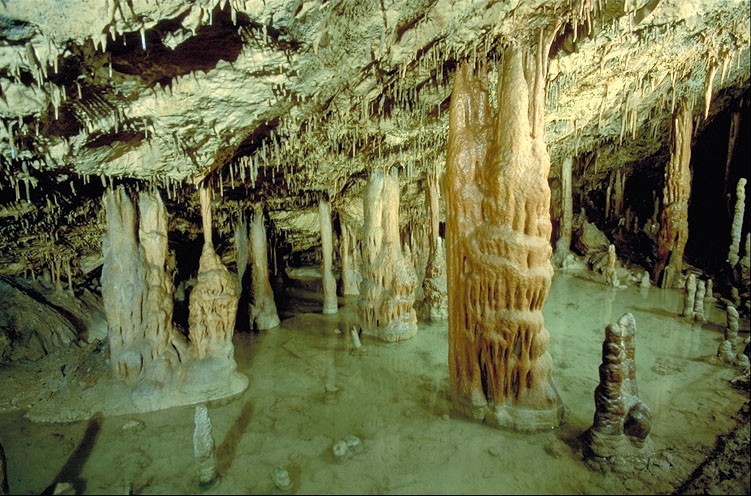
Skocjan Caves is a cave system in Slovenia. Due to its exceptional significance, Škocjan Caves was entered on UNESCO’s list of natural and cultural world heritage sites in 1986. International scientific circles have thus acknowledged the importance of the caves as one of the natural treasures of planet Earth. Ranking among the most important caves in the world, Škocjan Caves represents the most significant underground phenomena in both the Karst region and Slovenia. Following its independence, the Republic of Slovenia committed itself to actively protecting the Škocjan Caves area; for this reason, it established the Škocjan Caves Regional Park, Slovenia and its Managing Authority, the Škocjan Caves Park Public Service Agency.
Škocjan Caves is, above all, a natural phenomenon of global significance, ranking side by side with the Grand Canyon, the Great Barrier Reef, the Galapagos Islands, Mount Everest, and others. Ranking among the most important caves in the world, Škocjan Caves represents the most significant underground phenomena in both the Karst region and Slovenia. Škocjan Caves was also entered on the List of Ramsar wetlands of international importance on 18 May 1999. Together with the underground stream of the Reka River, they represent one of the longest karst underground wetlands in Europe.
The Reka River disappears underground at Velika Dolina into Škocjan Caves and then flows underground for 34 km towards the Adriatic Sea surfacing near Monfalcone where it becomes the source of the Timavo River. The view of the big river, in the rainy season as it disappears underground, on the bottom of Velika Dolina, 160 m under the surface, is both majestic and frightening.
The exceptional volume of the underground canyon is what distinguishes Škocjan Caves from other caves and places it among the most famous underground features in the world. The river flowing through the underground canyon turns northwest before the Cerkvenik Bridge and continues its course along Hanke's Channel. This underground channel is approximately 3.5 km long, 10 to 60 m wide and over 140 m high. At some points, it expands into huge underground chambers. The largest of these is Martel's Chamber with a volume of 2.2 million cubic m and it is considered the largest discovered underground chamber in Europe and one of the largest in the world. It is interesting to note that an underground canyon of such dimensions ends with a relatively small siphon: one that cannot deal with the enormous volume of water that pours into the cave after heavy rainfall, causing major flooding, during which water levels can rise by more than one hundred metres.
The first written sources on Škocjan Caves originate in the era of Antiquity (2nd century B.C.) by Posidonius of Apamea and they are marked on the oldest published maps of this part of the world; for example the Lazius-Ortelius map from 1561 and Mercator's Novus Atlas from 1637. The fact that the French painter Louis-François Cassas (1782) was commissioned to paint some landscape pieces also proves that in the 18th century the caves were considered one of the most important natural features in the Trieste hinterland. His paintings testify that at that time people visited the bottom of Velika dolina. The Slovenian scholar Janez Vajkard Valvasor described the sink of the Reka River and its underground flow in 1689.
In order to supply Trieste with drinking water, an attempt was made to follow the underground course of the Reka River. The deep shafts in the Karst were explored as well as Škocjan Caves. The systematic exploration of Škocjan Caves began in 1884 of a speleology division. Explorers reached the banks of Mrtvo jezero (Dead Lake) in 1890. The last major achievement was the discovery of Tiha jama (Silent Cave) in 1904, when some local men climbed the sixty-metre wall of Müller Hall. The next important event took place in 1990, nearly 100 years after the discovery of Mrtvo jezero (Dead Lake). Slovenian divers managed to swim through the siphon Ledeni dihnik and discovered over 200 m of new cave passages.



















0 comments:
Post a Comment